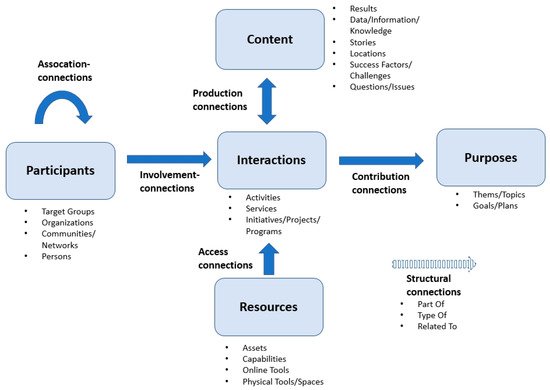Thanks a lot @lynnfoster!
While you were typing I was too. Re-reading a paper posted before..
The paper offers a full-blown conceptual model, something more related to what I’d like to have in my own future federated app..
Though I don’t want to move away from finding the minimal definition to work with, the aforementioned A Community Network Ontology for Participatory Collaboration Mapping: Towards Collective Impact paper by Aldo de Moor of CommunitySense specifies the entirety of the community concept and for relationships has a number of different types:
| CONNECTION TYPE CATEGORIES | CASE CONNECTION TYPES |
|---|---|
| Association-connections | Member Of (5); Owner Of (2); Beneficiary Of; Has Client; Involved Partner; Research Partner Of; Stakeholder Of |
| Involvement-connections | Involved In (15); Organizes (6); Informedness (2); Sponsor Of (2); Responsible Partner; |
| Access-connections | Supports (3); Used In (2); Enables; Has Capability; Has Resource; Uses |
| Production-connections | Strengthens (6); Weakens (6); Has Result (4); Produces (4); Located In (3); Story About (2); Used In (2); Case About; Dialogue; Followed By; Generates; Gives; Has Capability; Has Contract; Country of Origin; Country of Work; Data Source About; Involved Organization; Question/Issue About; Uses; Working On |
| Contribution-connections | Contributes To (7); About (5); Aimed At; Has Domain; Has Impact; Has Theme |
| Structural-connections | Part Of (16); Related To (3); Type Of |
Just putting this out there, as maybe when extending our own concepts, we may be entering terrain where the additional semantics may start to make sense. Btw, with what Valueflows already provides a lot of this can already be captured, though less explicitly.
Update: Much of what is in the model above I would - for may own purposes - model in separate domains e.g. Governance, Collaboration, etc.
